An installation (2008–2010) by TEEMU MÄKI. I worked on this installation for many years, on and off, and exhibited parts of it in museums and galleries. I will continue with it at some point, but at the moment more recent works and an exhbition of them takes the first place. I recommend you to visit also the page that has info of them: DO YOU REMEMBER CHECHNYA? / MUISTATKO TŠETŠENIAN? (2023). / Työskentelin tämän installaation parissa monta vuotta, aika ajoin, ja esitin osia siitä museoissa ja gallerioisaa. Jatka installaatiota jossain vaiheessa, mutta tällä hetkellä etusijalla ovat tuoreemmat työt ja niitä esittelevä näyttely. Suosittelen käymään myös sivulla, jossa on tietoa niistä: MUISTATKO TŠETŠENIAN? / DO YOU REMEMBER CHECHNYA? (2023). 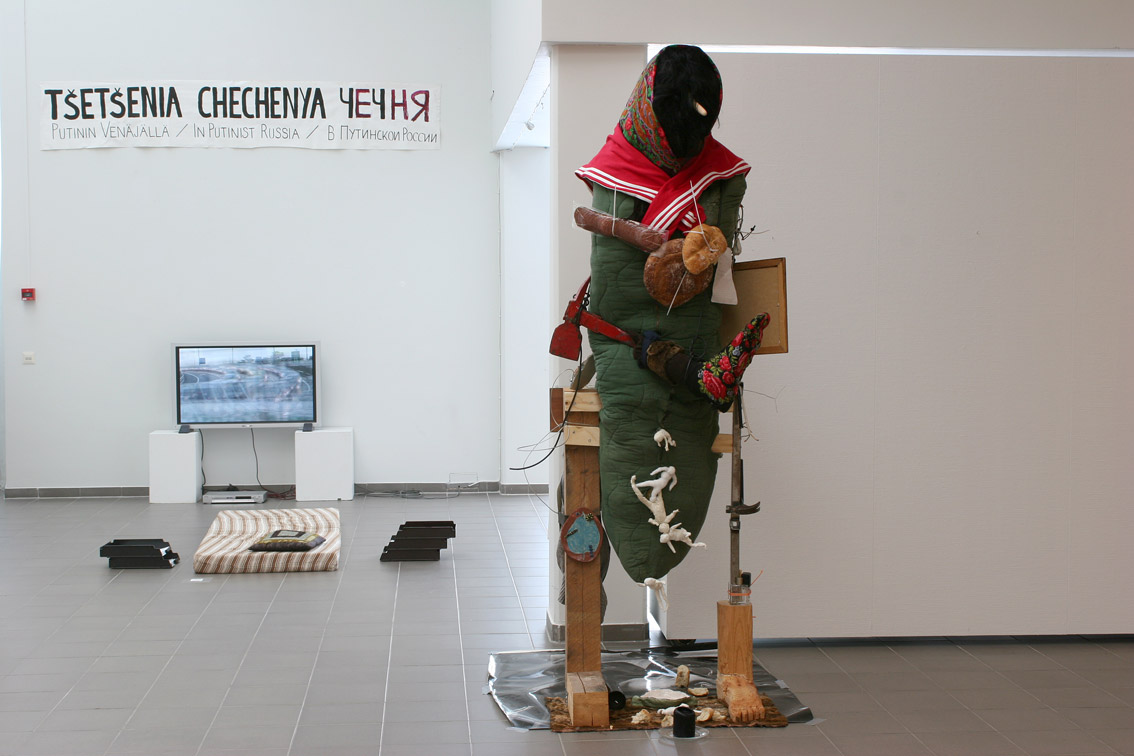 This is an old work, which I made mainly with my MA students, when I was the Professor of Fine Arts in Aalto University. Many parts of it have been exhibited, but never the whole, multipartite work. I will continue working with this project, next time with Chechenian refugees, either in Finland or elsewhere. The most often exhibited parts of the work are these two collective paintings (2 x 3 meters each), both painted with Finnish/Estonian/Russian art students.  Russian Interior 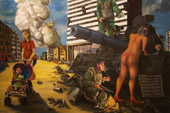 Grozny Street Scene A LIST OF THE OTHER PARTS & OLDER CONTENT USED IN VARIOUS VERSIONS OF THE INSTALLATION 1. NUMEROITA / NUMBERS text in 3 languages, 30 x 21 cm each 2. Mother (Russia?) / Äiti (Venäjä?) by Teemu Mäki & the students Katri Kainulainen, Salli Kari, Kristina Sedlerova and Johanna Torkkola, sculpture (wood, metal, etc.) 3. Neon Lights in Moscow / Rush Hour in Helsinki / War in Chechnya video loop, 10 minutes 4. In Memoriam Anna Politkovskaya / Anna Politkovskayan muistolle mixed media on paper, triptych, 310 x 460 cm, 2009–2010. 5. Reapers (after A.G. Venetsianov, 1780–1847) / Niittäjät (A.G. Venetsianovin (1780–1847) mukaan) diptych, 2004, hard-ground etching & aquatint, 140 x 100 cm (image 90 x 63 cm) each 6. Russian Veteran Drinks, Bleeds and Begs on Ligovsky Prospekt, St. Petersburg, Russia / Venäläinen sotaveteraani juo, vuotaa ja kerjää Ligovski prospektilla, Pietarissa 17.4.2008, acrylic on canvas, 60 x 90 cm 7. Dudayev Dedication 1996/2008, collage with text and two photos, 60 x 41 cm 8. Four small drawings: Only the Poet Escapes... (...the Animal Rationalism of Mundane Hedonism.) / Vain runoilija pääsee karkuun... (...arkipäiväisen hedonismin eläimellistä rationaalisuutta.) 2003–2004, mixed media on paper, 27 x 35 cm Julia, mixed media on paper, 27 x 35 cm Ursula, mixed media on paper, 27 x 35 cm Epäuskoinen rukoilee / Disbeliever Praying, mixed media on paper, 27 x 35 cm ...and a copy of A.G. Venetsianov's (1780–1847) painting Reapers. 9. The Civil War Goes On / Kansalaissota jatkuu an essay about the Finnish Civil War (1918) / essee Suomen kansalaissodasta (1918) 10. Love Is Flying So High a Human Mind Can Not Reach It / Rakkaus liitää ihmismielen tavoittamattomissa 11. Pondering Mattress / Pohtimispatja + A wall of sketches by my students for an upcoming collective painting about Chechnya. These overviews & details of the installation are from Kipu / Pain exhibition, Kerava City Art Museum, Finland, summer of 2010: 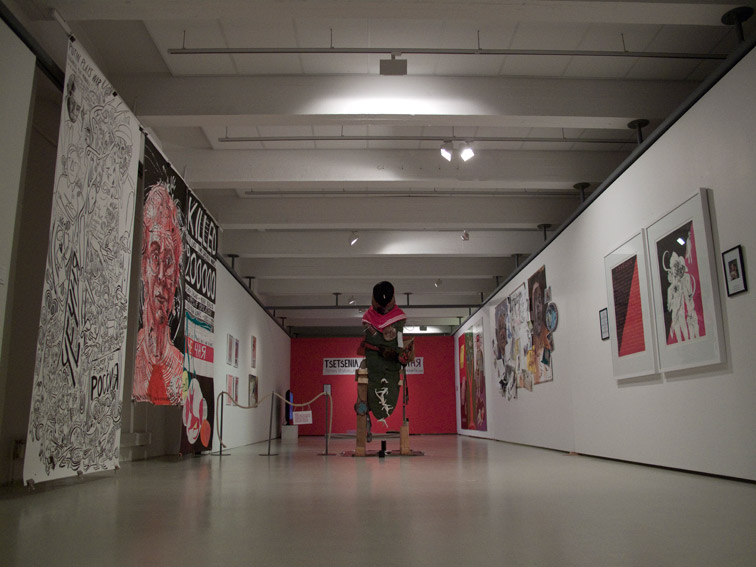 Overview.  Video loop, title banner & mattress for reading, viewing and meditation. 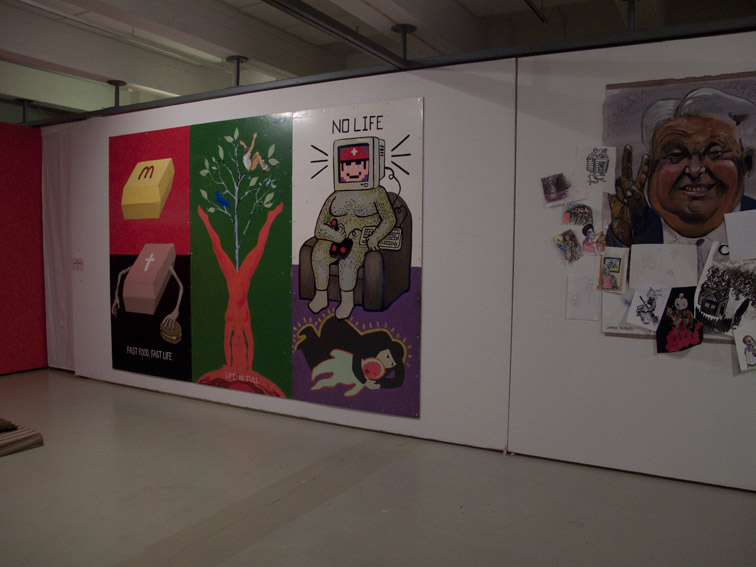 Fast Food, Fast Life, No Life -triptych, collective painting by my students. 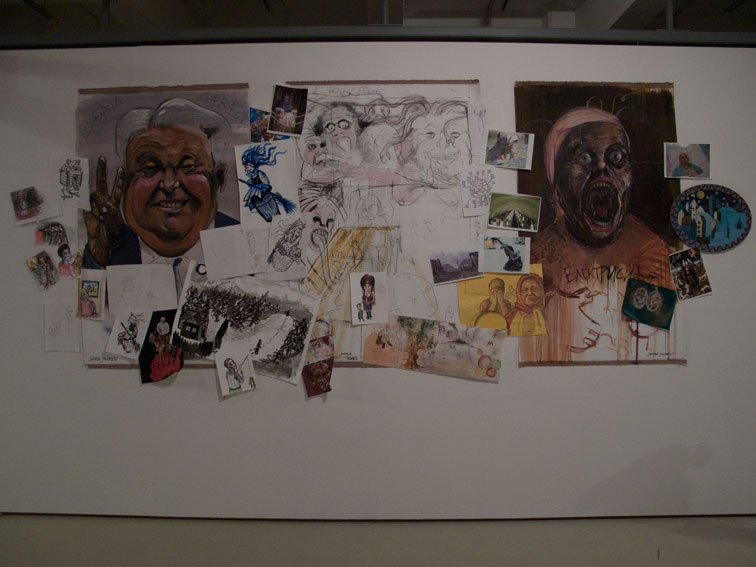 The wall of Chechnya-related sketches by my students, for an upcoming collective painting. The following overviews & details are from Helsinki Biennale 2008 (Design Museum Helsinki, Finland) and from my solo show How to Live? / Why to Live (Kemi Art Museum, Finland, 2010): 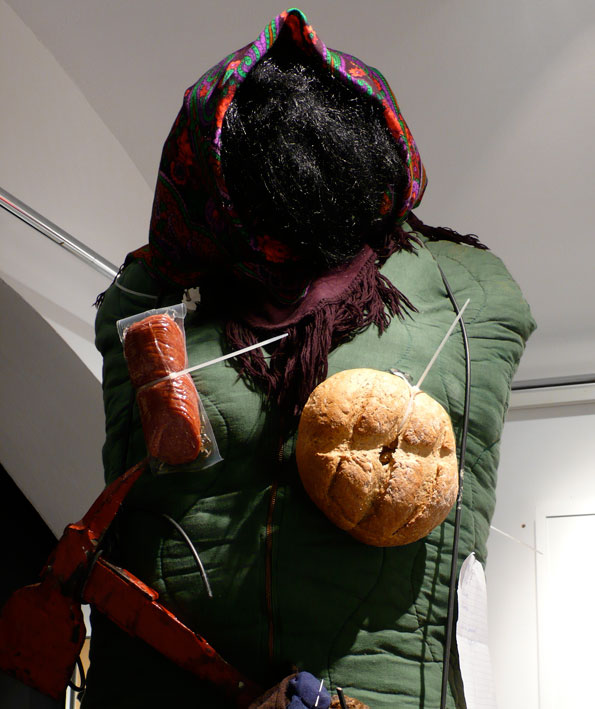 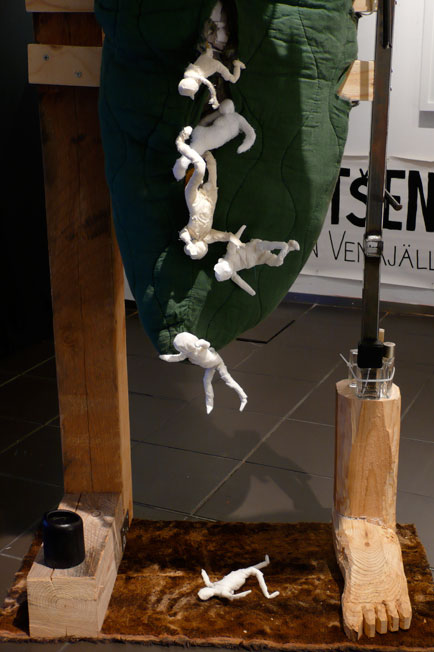 Mother (Russia?) / Äiti (Venäjä?) by Teemu Mäki & the students Katri Kainulainen, Salli Kari, Kristina Sedlerova and Johanna Torkkola, sculpture (wood, metal, etc.) 
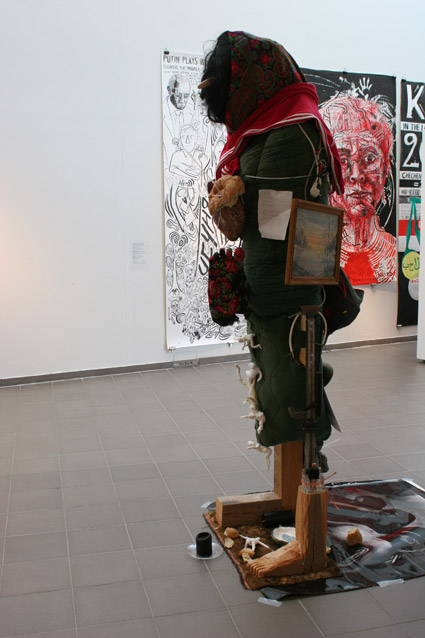 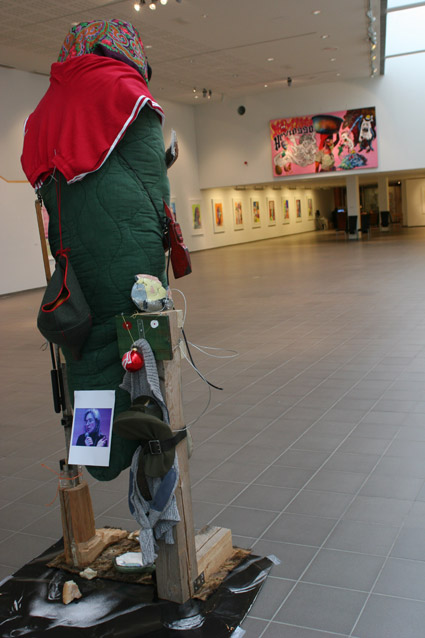
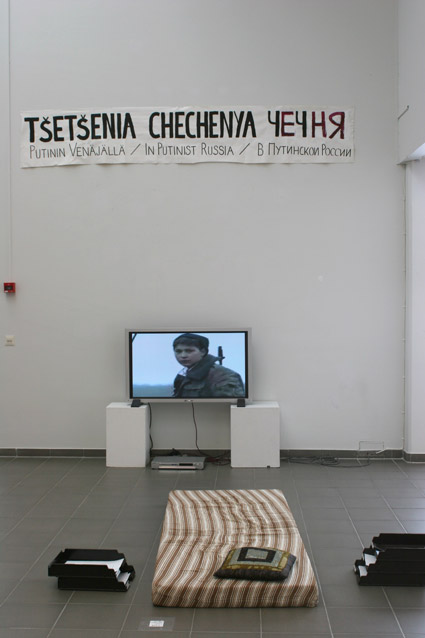 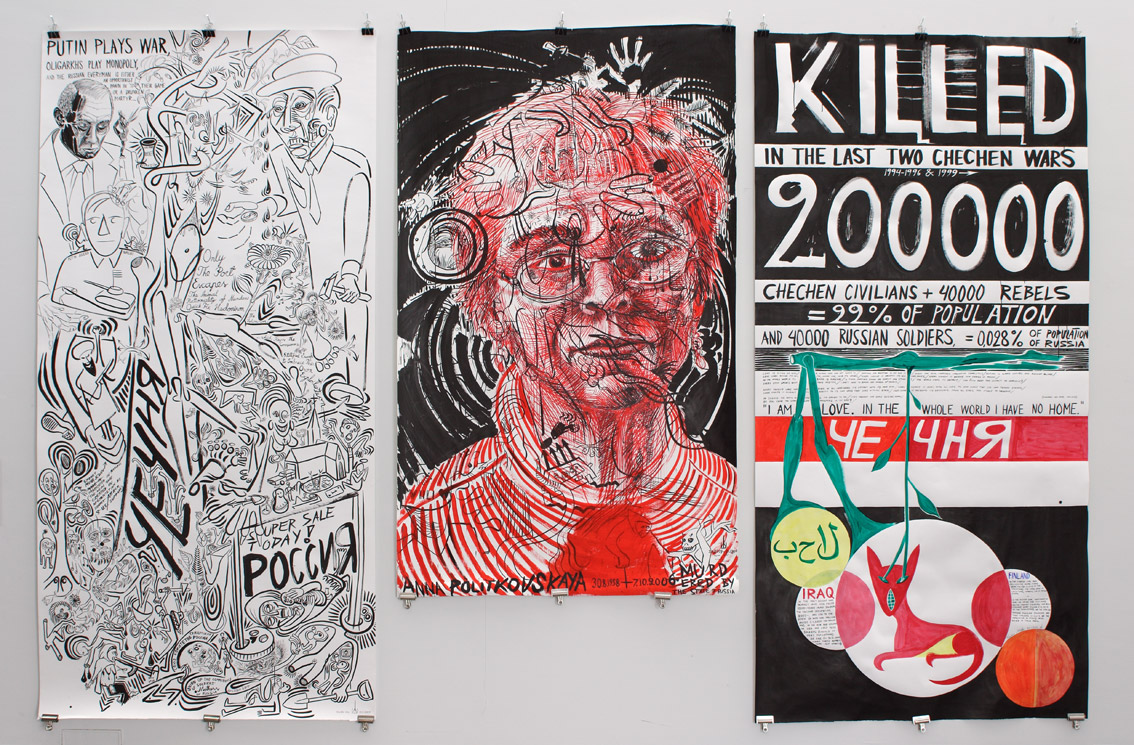 In Memoriam Anna Politkovskaya / Anna Politkovskajan muistolle mixed media on paper, triptych, 310 x 460 cm, 2009–2010. 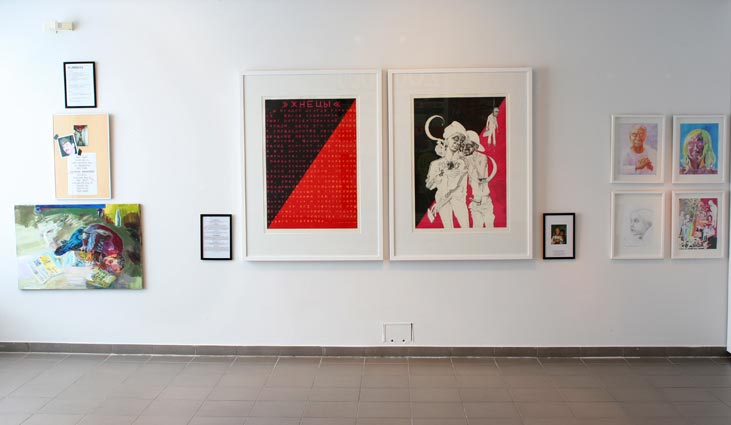 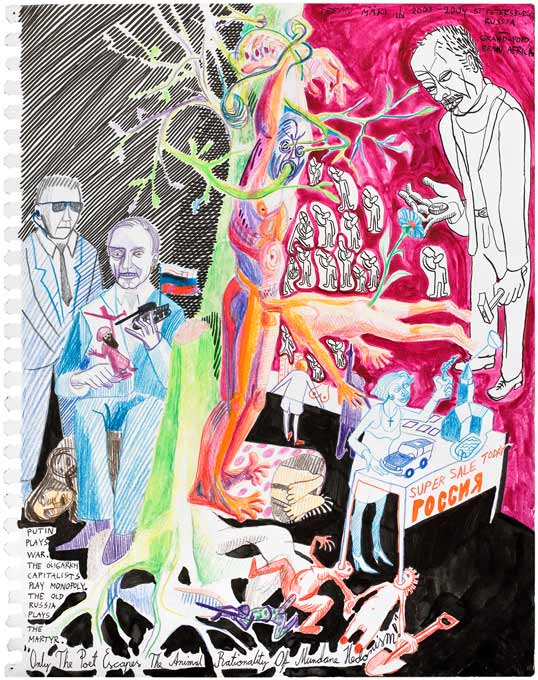 Only the Poet Escapes... (...the Animal Rationalism of Mundane Hedonism.) / Vain runoilija pääsee karkuun... (...arkipäiväisen hedonismin eläimellistä rationaalisuutta.) 2003–2004, mixed media on paper, 27 x 35 cm 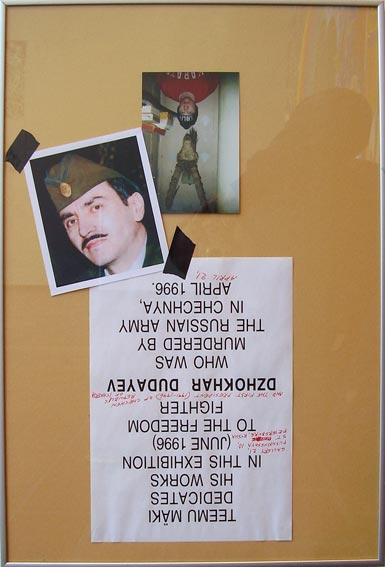 Dudayev Dedication 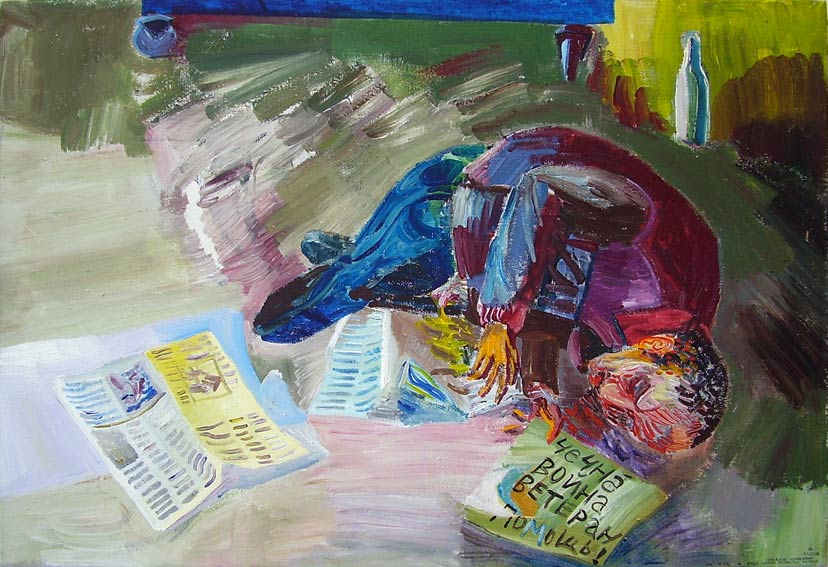 Russian Veteran Drinks, Bleeds and Begs on Ligovsky Prospekt, St. Petersburg, Russia / Venäläinen sotaveteraani juo, vuotaa ja kerjää Ligovski prospektilla, Pietarissa 17.4.2008, acrylic on canvas, 60 x 90 cm 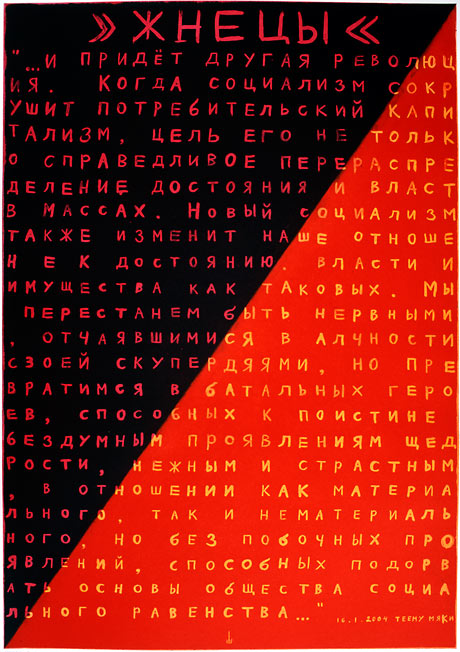
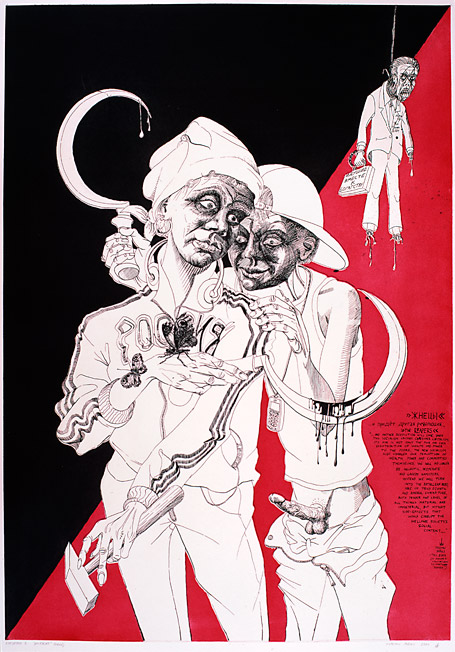 Reapers (after A.G. Venetsianov, 1780–1847) / Niittäjät (A.G. Venetsianovin (1780–1847) mukaan) diptych, 2004, hard-ground etching & aquatint, 140 x 100 cm (image 90 x 63 cm) each
|
||||
|
|
||||
 90 sec TRAILER of the Neon Lights in Moscow / Rush Hour in Helsinki / War in Chechnya video loop |
||||
|
Overviews of an earlier version, in Helsinki Biennale 2008, Design Museum: 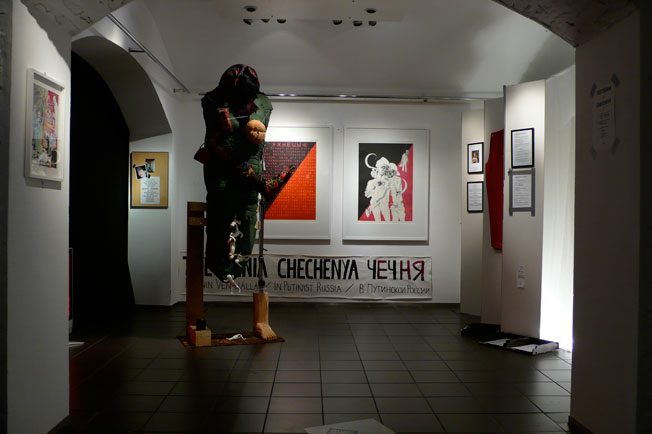 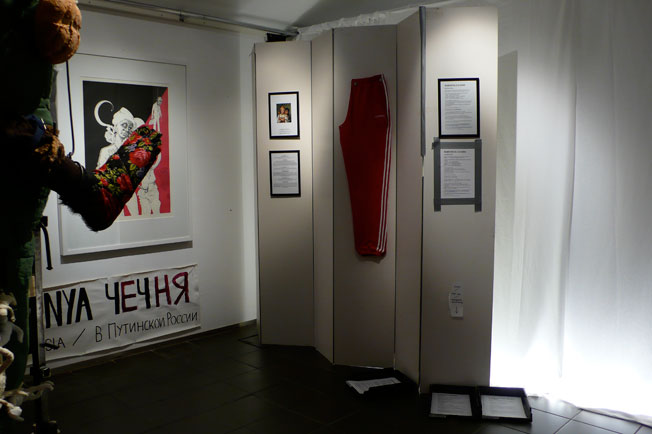 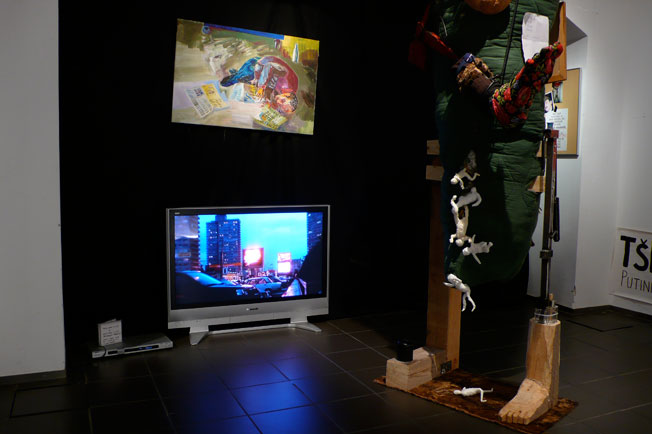 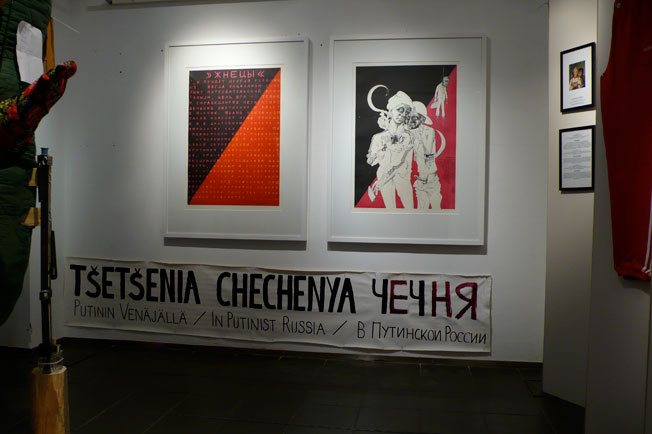 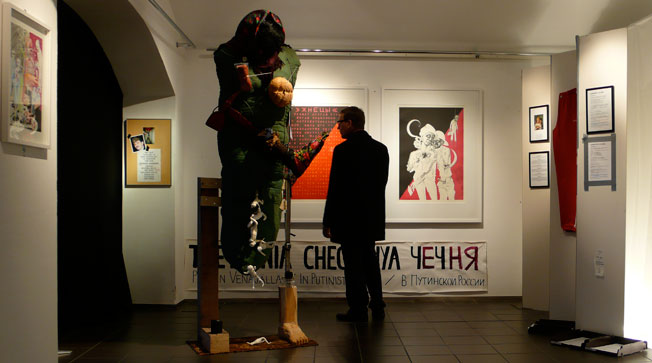 |
Back to Installations
| HOME
/ etusivu
PAINTING (+ drawing, printmaking & installation art) PHOTOGRAPHY EXHIBITIONS THEATRE / OPERA FILM & VIDEO TEXT CV news |